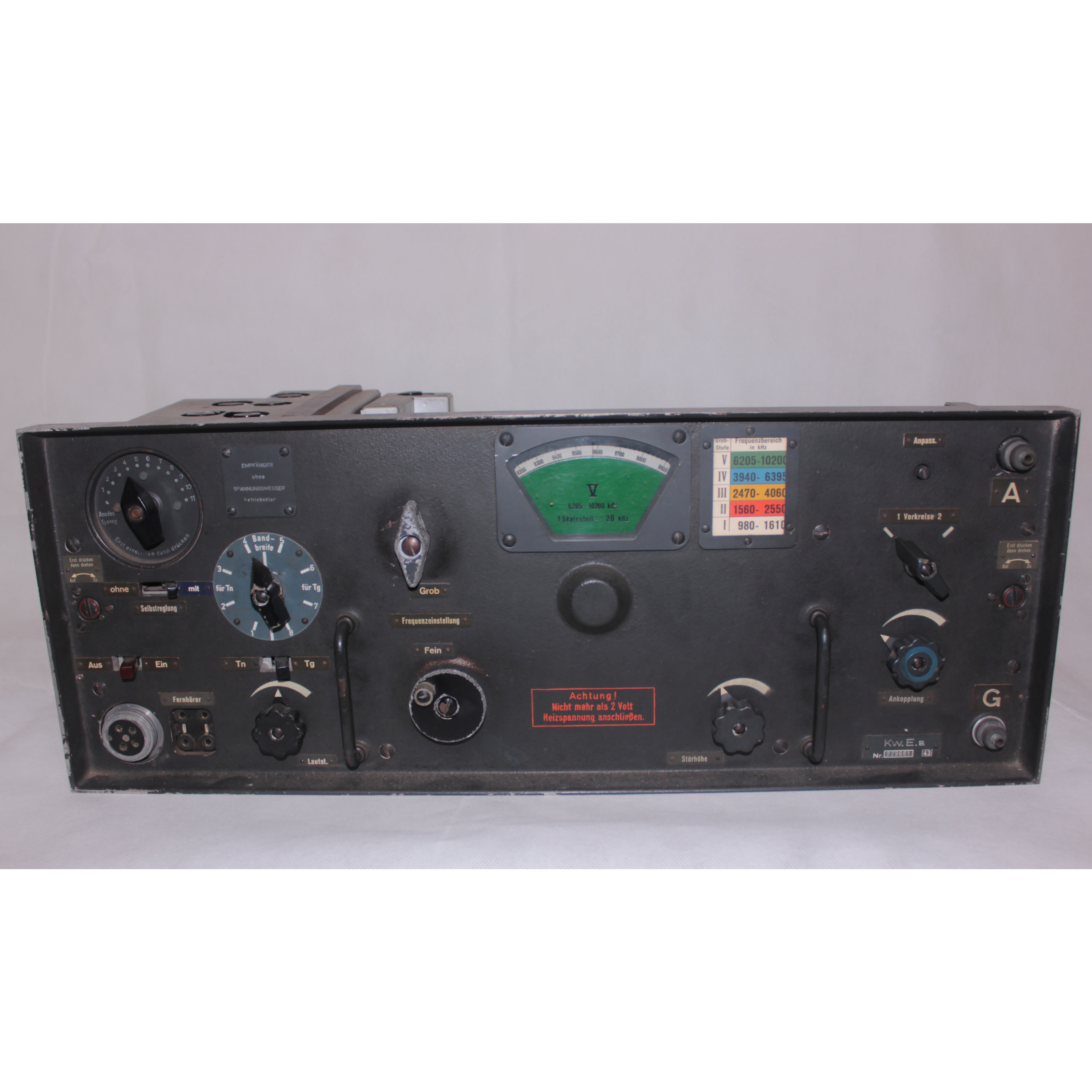
The Kw.E.a is a radio receiver for medium and short waves, designed and built in the late 1930s in Germany by Telefunken. Powered by two 2 V (for the valve filaments) and 90 V (for the anode) batteries, it covers from 980 kHz to 10.2 MHz in 5 bands. It was used extensively by the German army during the Second World War.
Insights
The Kw.E.a is a radio receiver for medium and short waves, designed and built in the late 1930s in Germany by Telefunken. Powered by two 2 V (for the valve filaments) and 90 V (for the anode) batteries, it covers from 980 kHz to 10.2 MHz in 5 bands. It was used extensively by the German army during the Second World War.
It covers 980 kHz to 10.2 MHz in 5 bands, thus including the high part of the medium wave and the low part of the short wave. The band change takes place by means of a rotating drum which contains the coils of the local oscillator and the two radio frequency amplifier stages. When the mechanism starts to rotate the contacts are raised; when the drum reaches the desired position (band) the contacts close again; in this way the contacts are kept clean and deoxidized.
The receiver can be powered by two 2V (for the filaments of the valves) and 90V (for the anode) batteries, which makes it also suitable for field use.
A unique feature is that it uses 11 identical valves (RV2P800); this simplified the procurement of spare parts and maintenance operations in the field.
Technical Data Sheet
Name of the asset: Kw.E.a
Category: radio receiver
Manufacturer: Siemens
Country of production: Germany
Year of production: 1940 – 1941